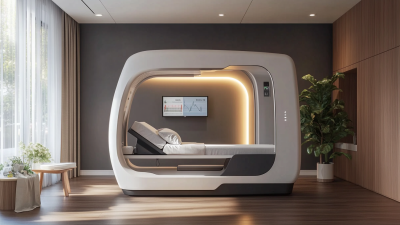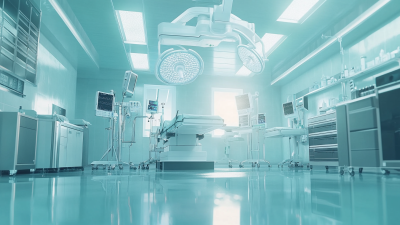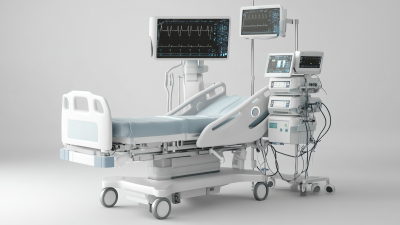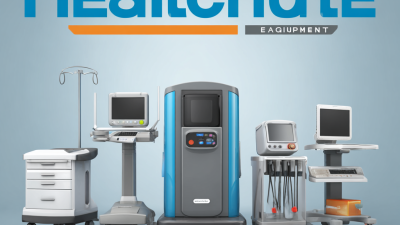Evaluating the Advantages of Different Types of Medical Devices for Healthcare Applications
In recent years, the healthcare sector has experienced significant advancements in technology, with medical devices playing a pivotal role in enhancing patient care and improving clinical outcomes. According to a report by Grand View Research, the global medical device market is expected to reach $612 billion by 2025, driven by increasing demand for innovative healthcare solutions and an aging population. This surge in market value highlights the importance of evaluating the advantages of different types of medical devices, as each brings unique benefits tailored to specific healthcare applications.

From diagnostic equipment to therapeutic devices, understanding their roles can lead to better decision-making by healthcare professionals. Additionally, the integration of digital health technologies into medical devices opens new avenues for patient monitoring and data collection, ultimately transforming the landscape of healthcare delivery.
Exploring the Impact of Wearable Medical Devices on Patient Monitoring
Wearable medical devices have revolutionized patient monitoring, offering real-time health data that can empower both patients and healthcare professionals. These devices, such as smartwatches and fitness trackers, can continuously observe vital signs like heart rate, blood pressure, and oxygen levels, providing a comprehensive view of an individual’s health status. This constant data stream not only aids in early diagnosis and timely interventions but also enhances patient engagement by allowing individuals to take an active role in their health management.
**Tip:** When choosing a wearable device, look for compatibility with your smartphone or existing health apps. This can help you seamlessly track your health data and share it with your healthcare provider.
The impact of wearable technology extends beyond mere tracking. These devices promote proactive healthcare by encouraging lifestyle improvements through activity tracking and reminders for medication adherence. With advanced features like ECG monitoring and fall detection, wearables play a crucial role in chronic disease management and overall wellness.
**Tip:** Always prioritize wearables that offer robust privacy and security features to protect your sensitive health information. Regularly update the device software to enhance functionality and security.
Comparative Analysis of Imaging Technologies in Diagnostic Medicine
In the rapidly evolving field of diagnostic medicine, imaging technologies play a pivotal role in enhancing patient outcomes. A comparative analysis of various imaging modalities—such as MRI, CT, and ultrasound—reveals distinct advantages tailored to specific clinical needs. For instance, according to a report by MarketsandMarkets, the global MRI market is projected to reach $9.3 billion by 2025, driven by its unparalleled ability to produce high-resolution images of soft tissues, which is crucial for early detection of conditions like tumors and neurological disorders.
On the other hand, the CT imaging market is also witnessing significant growth, attributed to its speed and efficiency in diagnosing a wide range of conditions, particularly in emergency settings. The same report indicates that the CT market is expected to grow at a CAGR of 4.9% during the forecast period. Ultrasound, known for its safety and cost-effectiveness, continues to be invaluable in obstetrics and cardiology, with the global ultrasound market expected to exceed $9 billion by 2026. This diversity in imaging technologies underscores the importance of selecting the right tool for each clinical scenario, ensuring optimal patient care and resource utilization in healthcare settings.

The Role of Telemedicine Devices in Enhancing Remote Healthcare Access
Telemedicine devices have revolutionized the way healthcare is delivered, particularly in enhancing remote healthcare access for patients in underserved areas. These innovative tools, which include mobile health apps, remote monitoring systems, and teleconsultation platforms, enable healthcare providers to reach patients without the need for physical visits. This is particularly crucial for individuals living in rural locations or those with mobility challenges, as they can receive timely medical attention without the complications of travel.
Moreover, the integration of telemedicine devices into everyday healthcare practices promotes proactive patient management. Continuous remote monitoring allows healthcare professionals to track vital signs and health metrics in real-time, facilitating early intervention when health issues arise. This not only improves outcomes but also reduces the strain on healthcare facilities by minimizing unnecessary in-person consultations. As telemedicine devices continue to evolve, their role in providing seamless access to healthcare will only grow, transforming the patient experience and contributing to a more connected and efficient healthcare system.
Innovations in Implantable Devices: Benefits and Challenges
The field of implantable medical devices is undergoing significant innovations, particularly with the advent of bioelectronic medicine. This approach harnesses implanted devices to stimulate nerves in the body's natural signaling pathways, offering therapeutic benefits for various conditions. However, creating these devices presents substantial challenges. Engineers must ensure that these complex devices are not only defect-free but also durable enough to endure harsh environments over extended periods.
When considering the use of implantable devices, one must recognize the importance of surface modification techniques. Innovations such as Surface Active Therapeutics are pivotal for preventing infections and complications associated with long-term implants. These advanced coatings help prolong the lifespan of devices, ensuring a safer experience for patients.
Tip: When evaluating implantable devices, consider their longevity and the technologies employed in their construction. Devices that integrate advanced materials and bio-compatible surfaces are likely to yield better outcomes. Additionally, stay informed about the latest developments in medical regulations that could affect device availability and innovation.

Evaluating Cost-Effectiveness of Medical Devices in Clinical Settings
When evaluating the cost-effectiveness of medical devices in clinical settings, it’s essential to consider both their direct and indirect costs. According to a recent report by the International Medical Device Manufacturers Association (IMDM), the overall cost savings generated by using innovative medical devices can reach up to 30% when effectively integrated into healthcare practices. This significant reduction often stems from improved patient outcomes, reduced hospital readmission rates, and shorter recovery times. For instance, the adoption of advanced monitoring devices in cardiac care has shown to not only enhance patient monitoring but also decrease the length of hospital stays, leading to an estimated annual savings of $1,500 per patient.
Tip: One effective way to evaluate the cost-effectiveness of a medical device is to conduct a thorough analysis of its return on investment (ROI). By comparing the upfront costs with the potential savings from reduced readmissions and complications, healthcare facilities can make informed decisions that benefit both their budget and patient care.
Moreover, the selection of medical devices should also consider their impact on workflow efficiency. The same IMDM report indicated that devices designed for user-friendliness and integration with existing systems tend to save hospitals significant administrative time, translating to lower operational costs. Streamlining processes not only enhances staff satisfaction but ultimately results in better patient experiences.
Tip: Regularly reviewing the performance and cost-effectiveness of existing devices can help healthcare providers stay updated on innovations that may offer better value. Implementing a systematic approach to device evaluation ensures optimal resource allocation in a continuously evolving healthcare landscape.
Related Posts
-

Global Market Outlook 2025: Insights and Innovations in Health Equipment for International Buyers
-

Unlocking Cost Savings: How Global Procurement of Surgical Supplies Can Transform Healthcare Efficiency
-

Chinese Excellence in Health Equipment Manufacturing for Global Leaders
-

The Ultimate Resource for Global Buyers in Surgical Supplies Market Trends and Insights
-

Ultimate Resource for Global Buyers in Medical Equipment Procurement
-

How to Choose the Best Healthcare Equipment for Your Facility: A Step-by-Step Guide
